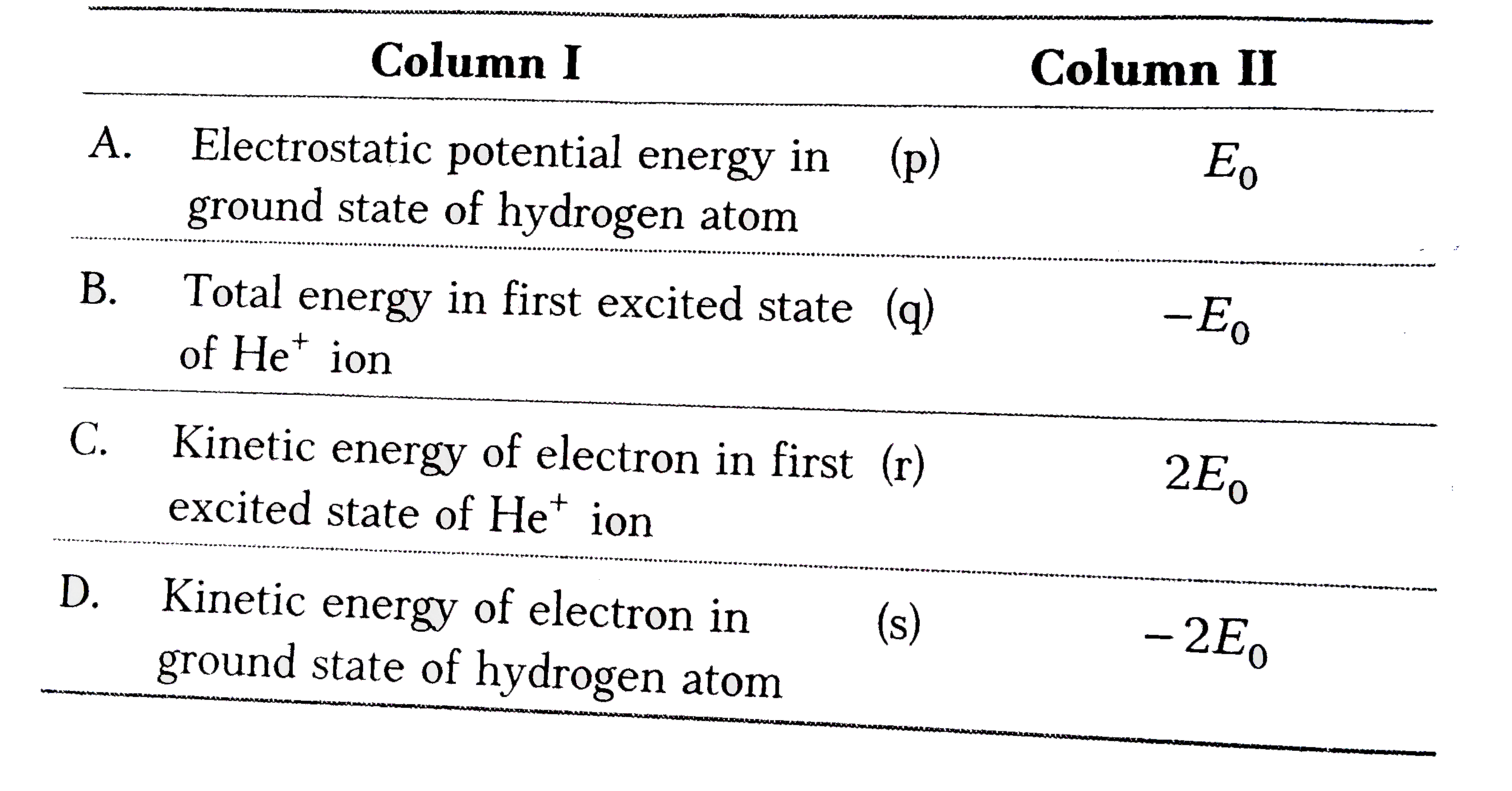Obtain the first Bohr radius and the ground state energy of a muonic hydrogen atom (i.e., an atom in which a negatively charged muon (μ) of mass about 207me revolves around a proton).
Step by step video & image solution for Obtain the first Bohr radius and the ground state energy of a muonic hydrogen atom (i.e., an atom in which a negatively charged muon (mu) of mass about 207m_e revolves around a proton). by Physics experts to help you in doubts & scoring excellent marks in Class 12 exams.
Topper's Solved these Questions
- BOOK - SL ARORACHAPTER - ATOMS, NUCLEI AND MOLECULESEXERCISE - Problem32videos
ATOMS, NUCLEI AND MOLECULES
- BOOK - SL ARORACHAPTER - ATOMS, NUCLEI AND MOLECULESEXERCISE - Problems For Self Practice87videos
ATOMS, NUCLEI AND MOLECULES
- BOOK - SL ARORACHAPTER - AC CIRCUITS AND ELECTRIC CIRCUITSEXERCISE - problem57videos
AC CIRCUITS AND ELECTRIC CIRCUITS
- BOOK - SL ARORACHAPTER - CAPACITORSEXERCISE - problem for self practive65videos
CAPACITORS
Similar Questions
Knowledge Check
- Question 1 - Select One
if muonic hydrogen atom is an atom in which a negatively charged muon (μ) of mass about 207me revolves around a proton, then first bohr radius of this atom is (re=0.53×10−10m)
A2.56×10−10mB2.56×10−11mC2.56×10−12mD2.56×10−13m - Question 2 - Select One
The radius of the hydrogen atom in its ground state is a0. The radius of a muonic hydrogen atom in which the electron is replaced by an identically charged muon with mass 207 times that of an electron, is aμ equal to
A207 a0Ba0207Ca0√207Da0√207 - Question 3 - Select One
What is the diameter of .2Be4 in this ground state? Given Bohr radius of hydrogen atom is 53pm.
A53pmB26.5pmC1.6pmD100pm
The ground state energy of hydrogen atom is -13.6eV. What are P.E. and K.E. of electron in this state?
View SolutionEnergy in the ground state of hydrogen atom is -13.6 eV. What is the energy in the first excited state ?
View SolutionHydrogen Atom and Hydrogen Molecule
The observed wavelengths in the line spectrum of hydrogen atom were first expressed in terms of a series by johann Jakob Balmer, a Swiss teacher. Balmer's empirical empirical formula is
1λ=RH(122−1n2), N=3,4,5
RH=Mee48ε20h3c=109.678cm−1
Here,
RH is the Rydberg Constant, me is the mass of electron. Niels Bohr derived this expression theoretically in 1913. The formula is easily generalized to any one electron atom//ion.
A formula analogous to Balmer's formula applies to the series of spectral lines which arise from transition from higher energy levels to the lowest energy level of hydrogen atom. Write this formula and use it to determine the ground state energy of a hydrogen atom in eV.
A 'muonic hydrogen atom' is like a hydrogen atom in which the electron is replaced by a heavier particle, the muon. The mass of a muon is about 207 times the mass of an electron, while its charge is the same as that of an electron. A muon has a very short lifetime, but we ignore its ubstable nature here.View SolutionThe potential energy of the orbital electron in the ground state of hydrogen atoms is -E, what is the kinetic energy?
View SolutionA formula analogous to Rydberg formula applies to the series of spectral ines which arise from transition from higher energy level to the lower energy level of hydrogen atom.
A muonic hydrogen atom is like a hydrogen atom in which the electron is replaced by a heavier particle,t he 'muon'. the mass of the muon is about 207 times the mass of an electron, while the charge remains same as that of the electron. Rydberg formula for hydrogen atom is:
1λ=RH[1n21−1n22](RH=109678cm−1)
Q. Radius of first Bohr orbit of muonic hydrogen atom is:View Solution


